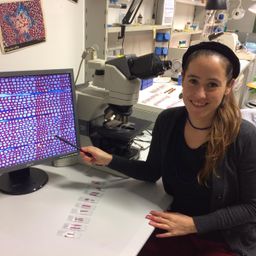Long-term eddy covariance fluxes and xylem anatomy for understanding carbon fixation in white pine woody biomass
My Session Status
Improving our understanding of the carbon cycle is key to addressing the challenges of climate change. In this study, we investigated the relationships between intra and inter-annual climate variations, carbon fluxes, and the xylem biomass in an 80-year plantation of Pinus strobus at Turkey Point, Ontario, Canada. From eddy covariance tower, we obtained daily Gross Primary Production (GPP), precipitation and air temperature for the period 2003-2018. To determine inter-and intra-annual xylem biomass we selected 12 trees and built wood anatomical trait chronologies (cell lumen area, cell wall thickness, cell number, cell wall area and ring wall area) over the past 50 years. Using moving windows, we correlated all chronologies with daily climate data and GPP to analyse their associations at intra-annual scale.
The analysis showed that cell lumen area and cell wall thickness were strongly influenced by spring and summer temperature and precipitation. For the first time, we observed strong positive and significant correlations between GPP in the growing season and the cell wall area (which estimates the amount of carbon in each xylem cell) both in earlywood (May 10 - Aug 4, r = 0.685) and latewood (Jul 3 – Sep 3, r = 0.885). Strong positive correlations were also found between GPP and cell number and ring wall area. These results suggest a direct linkage between CO2 fluxes and the accumulation of carbon in woody biomass. This work will help to reconcile two important techniques that are widely used to study carbon sequestration in forests. It will help to reduce uncertainty in woody carbon accumulation and will open new perspectives in the study of the forest carbon cycle.
